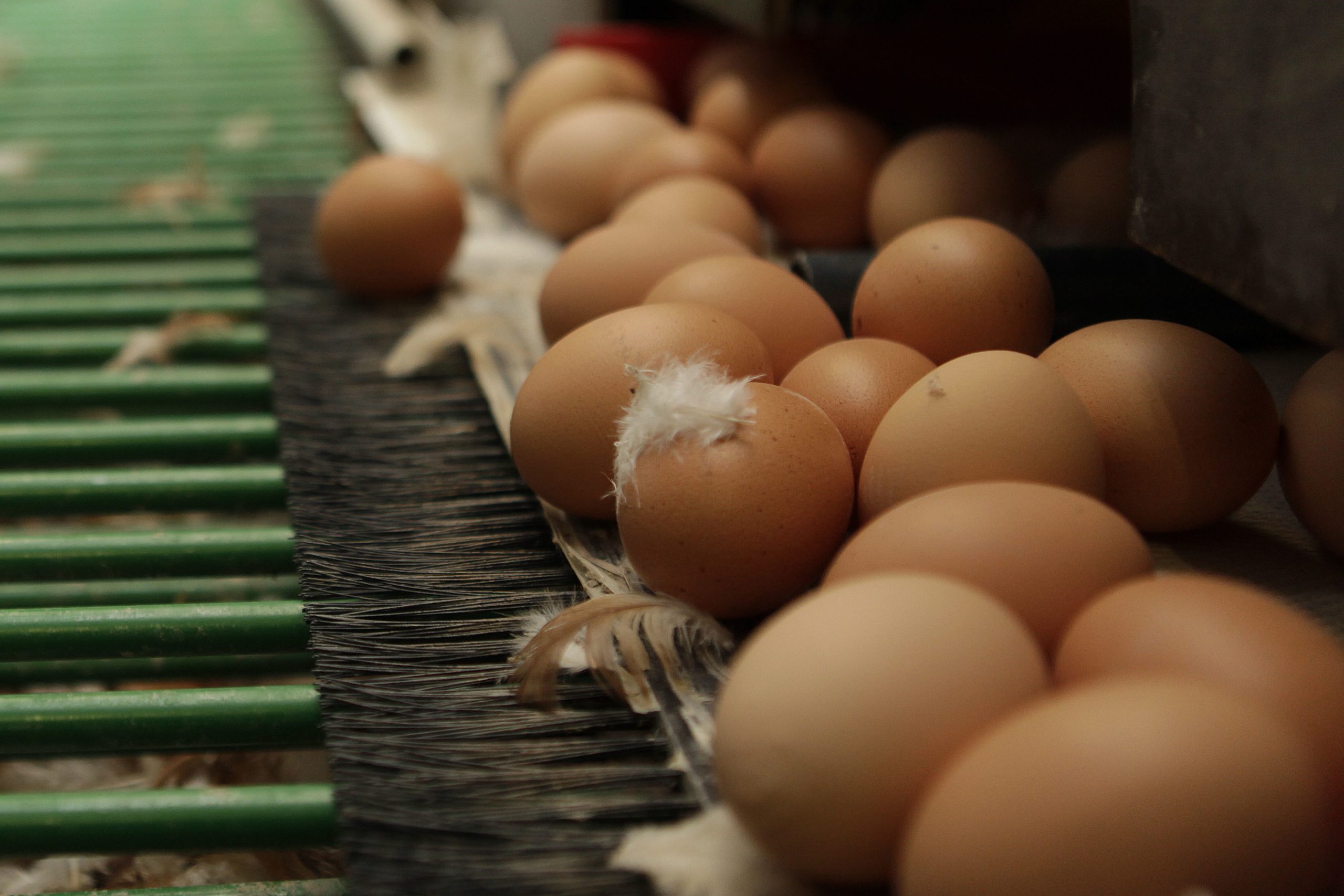Mycotoxins: Their effect in breeder hens

Breeding hens are a valuable asset for the poultry industry, as they produce the hatching eggs and day-old chicks. It is therefore important to manage contamination as well as possible. Mycotoxin management is part of that.
In the production of hatching eggs and day-old chicks, the selection of raw materials with high nutritional quality and safety is the common practice. Mycotoxins are an undesired factor in any feed formulated for animals in production and reproduction, but often, it is inevitable to have certain levels of contamination. The presence of mycotoxins in breeding bird rations does not always lead to visible symptoms, such as trichothecenes causing oral lesions. However, it may influence productivity, egg quality, hatchery performance, as well as chick quality and immunity. Mycotoxins exert toxic effects mainly on the gastrointestinal tract, liver, and kidneys and can accumulate in some tissues but also in the eggs.
Egg production
Mycotoxicosis in hens can cause reduced egg production. As can be seen in Figure 1, the levels at which these effects can be observed are as low as 100ppb in feed, for example with a 21 day exposure to ochratoxin. By increasing the level of the toxin, production further decreases. A similar effect is obtained by exposing birds to aflatoxin. In contrast, DON levels that affect productivity in breeding hens are high and infrequent in grains and by-products. Under experimental conditions, more than 10,000ppb of DON and a 28-day exposure are needed to adversely affect productivity. By increasing the exposure time (DON – from 56 to 144 days) a recovery of egg production can be observed. This recovery can be explained by feed intake behaviour of the animals: low at the beginning of the DON exposure and increasing afterwards. The most likely mechanism for the reduction of egg production is the decrease in protein synthesis. A lower synthesis of albumin is the result of a degeneration of the liver tissue caused by ochratoxin, T2, and DON. The livers then may look pale, friable and occasionally with superficial haemorrhages. Egg production is not the first parameter affected by mycotoxins in breeding hens. Parameters such as embryonic mortality and hatchability can be influenced before and even more than egg production and also without it being affected.
Figure 1 – Egg production influenced by mycotoxins compared to negative control (=100 %).

Eggshell quality and embryonic mortality
The eggshell is important to protect the progeny. Thin and fragile shells can increase embryonic mortality and decrease hatchability as well as weight gain of the embryo. Calcium is important for the construction of the eggshell. An impaired calcium metabolism leads to bad eggshell quality. Its bio-availability as well as vitamin D3, also important for this purpose, depends on intestinal integrity and on the production of enzymes and transporters that aid in feed digestion and nutrient absorption. These processes can be affected by aflatoxins, DON, T2, and Fumonisins. Also further metabolism can be affected by mycotoxins like aflatoxins and ochratoxins due to their nephrotoxic effect. By favouring the excretion of calcium they unbalance its metabolism. The metabolism of another element needed for egg shell formation, vitamin D3, also takes place in the liver. Furthermore, this organ provides most of the lipids that make up the yolk but also lipoproteins. that are necessary for the transport of calcium and carotenoids to the egg. Carotenoids are important for egg quality as well as chick immunity.
Figure 2 – Effects of mycotoxins on eggshell quality and embryonic mortality.

When the liver function is impaired, the internal and external quality of the egg declines, which, in the end, affects the production of day old chicks. Figure 2 illustrates the possible ways how mycotoxins can negatively affect eggshell quality and as a consequence embryonic mortality. If intestinal integrity is compromised, the utilisation of nutrients decreases. Liver and kidney damage leads to a less availability of calcium and other nutrients necessary for egg formation. Birds’ calcium levels in plasma then are lower and a greater mobilisation of calcium from the bones is the possible response from the organism. However, this response cannot be maintained and the eggs have a thinner shell. The thickness of the eggshell influences moisture loss and exchange with the environment during the incubation period. An optimal egg-shell quality will not allow the loss of nutrients and will also prevent bacterial contamination as well as embryo mortality. Figure 3 shows the effect of different mycotoxins on embryonic mortality. Incremental levels of ochratoxin or aflatoxin heighten embryonic mortality in a range from 1.5 to 7.5 times the embryonic mortality of a control group. In some cases, embryos are affected even when the hens have received feed contaminated with mycotoxins within the guidelines suggested by the EFSA. For example, 4,900ppb of DON for ten weeks increase the number of embryos with abnormalities. The causes are not clear, as only traces of DON can be found in the egg. However, this mycotoxin can affect protein synthesis at the liver level and with this the deposition of nutrients into the egg.
Figure 3 – Effects of mycotoxins on embryonic mortality.

Effects on the progeny
Ochratoxin and aflatoxin can be transferred into the egg, where they exert toxicity on the embryos. But this not necessarily results in mortality. However, the chicks can suffer from a compromised immune function due to two reasons: lower transmission of antibodies from the hen and lower viability of the chickens’ immune cells accompanied with a lower relative weight of the bursa of Fabricio and the thymus. When both aflatoxin and ochratoxin, are present in the feed, the effect on these parameters is synergistic. The final result could be an increased early chick mortality due to a higher incidence of bacterial and viral infections. The transmission of other mycotoxins into the egg is minimal. Therefore the existence of a direct effect on the progeny is unlikely, but an indirect effect via a lower deposition of nutrients must be considered.

Mycotoxins – knowledge centre: Looks at control and prevention, detection and testing, and contamination in animals
Risk management
The best approach to manage mycotoxin risk is to implement an integrated strategy that includes good crop and grain storing practices, regular sampling and mycotoxin analysis. Tools (such as MasterRisk) can help in providing evaluation of mycotoxin interactions and helps in choosing the best strategy to deal with specific mycotoxin challenges. The results of mycotoxin analysis can hence be used to take decisions regarding the inclusion levels of raw materials and choosing products with anti-mycotoxin action. Such products can prevent the passage of mycotoxins into the bloodstream and their contact with the gastrointestinal tract. The additional use of phytomolecules that support the liver function is highly advisable for long living animals as they have additional effects to keep welfare, health and performance. In mycotoxin risk management, prevention is the key for success.











